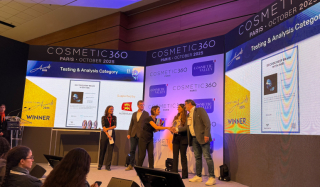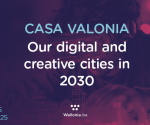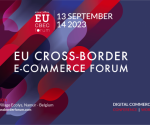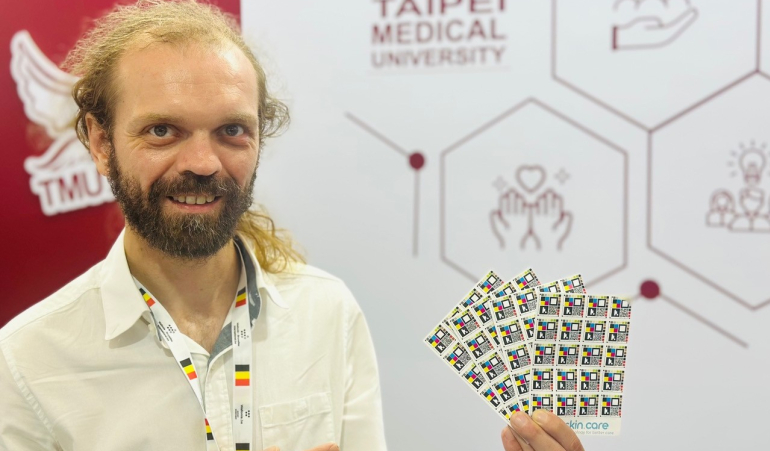
The Walloon start-up Dermatoo, based in Embourg, is setting its sights on Southeast Asia to develop its medtech innovation. In recent days, founder Julien Delarbre has been spotted in Taiwan and the Philippines. His company’s flagship product? A digital wound monitoring device. An application designed to make life easier for caregivers, improve medical follow-up by doctors, and, of course, enhance patient comfort.
Under the Smartphone’s Eye
The basic principle is quite simple. One only needs to regularly document a wound's progress using a smartphone camera and share the image with caregivers and doctors via the dedicated app.
"The idea is that in 15 seconds, a caregiver — for example, while changing a bandage — can capture an image of the wound by filming it from different angles. This allows for a precise, reliable, and usable 3D reconstruction," explains Julien Delarbre from Taipei, during an economic mission organized by Awex, the Walloon Export and Foreign Investment Agency, alongside Bio-Asia 2025.
The smartphone doesn’t do it all, of course. An algorithm is also required to decode the image, reconstruct the wound in 3D, measure it, and render all its color nuances to quickly detect potential infections. Eventually, temperature detection should complement the system. “Some cameras can capture infrared images,” the entrepreneur notes.
A Communication Tool for Healthcare Professionals
To obtain accurate and consistent color and size rendering of a wound, Dermatoo’s TwinSkin.care app uses a calibration marker during image capture. This marker looks like a small sticker (see illustration above), applied near the wound for 3D photography. It also contains a QR code that instantly identifies the patient and uploads the latest images to their file.
This connected file is accessible to caregivers, doctors, and care centers. It enables communication between professionals, allowing them to see each other’s comments. This helps optimize treatment based on the wound’s evolution.
Everything relies on a signal processing and communication algorithm, which is why Julien Delarbre is constantly coding — refining and testing the system. In Belgium, he benefits from coaching by Ignity, the Walloon incubator for engineering-based projects.
Since his first trip to Taiwan in December 2024 with a Walloon trade delegation led by Awex, Delarbre has also presented his innovation to BiomedAccelerator at Taipei Medical University (TMU x BE) — one of Asia’s leading biotech and medtech accelerators.
Dermatoo was quickly won over by the environment — and the feeling was mutual. The accelerator welcomed the start-up in February 2025, alongside a dozen Taiwanese and international start-ups. The goal: to accelerate the integration of biomedical innovations into local clinical settings. The program helps young companies validate their innovations through real-world testing and offers business model advice — a key step to accessing the Asian market.
Clinical Trial in the Philippines
Dermatoo’s technology shows promise — but it needs to work in all settings. That’s where Dr. Charles Cabuquit, an orthopedic surgeon at Hilom Wound Care Clinic in the Philippines, steps in. There, diabetes-related wounds are a major problem, and the demand for monitoring tools is high.
A clinical study on TwinSkin.care is set to begin this summer, with the protocol already approved by local authorities. “What took months in Europe was validated in two weeks over there. It’s impressive,” says Julien Delarbre.
His next goal: to validate the accuracy and reproducibility of wound imaging using TwinSkin.
Dermatoo hasn’t forgotten its roots. In Belgium, a large-scale clinical study is underway with CHU Charleroi, ULB, CHC Liège, and research center Multitel. “We’ve already analyzed more than 600 wounds,” says Dermatoo’s CSO (Chief Scientific Officer). The goal is to scientifically evaluate the system’s reliability, recreating a shared doctor-nurse dynamic.
“We want everyone to have this expertise in their pocket,” he says. The aim is to streamline care, reduce unnecessary clicks, and refocus medical time on what matters. “We’ve seen actions that required 17 clicks — it’s absurd. We want professionals to arrive, scan, and that’s it.”
A Healing Curve
“Today, most competing apps rely on a single photo. That doesn't show wound depth or allow for precise tracking,” says Delarbre. Dermatoo’s 3D reconstruction changes the game.
“Think of a child — we track their growth using percentile curves. Why not apply a similar concept to wounds with a healing curve to assess progress? If healing stops, something’s wrong: infection, malnutrition, poorly managed diabetes… Our solution aims to offer both a local and holistic view of the patient. This curve will guide future medical decisions.”
In Belgium, 20% of nurses’ time is spent on wound care. Yet, few nurses and doctors receive specialized training. That’s why Dermatoo is working to integrate professional knowledge into the app itself. Using an intelligent annotation tool, the application learns from expert users. This knowledge is then shared across the platform, so everyone benefits. “We’re not replacing professionals — we’re assisting them,” insists Delarbre.
An Accessible and Sustainable Business Model
TwinSkin is already on the market. Its business model is straightforward: each 3D analysis costs €1. No need to buy software or markers — Dermatoo provides the sheets and charges only for the analyses.
This inclusive model ensures that any healthcare provider, from small practices to large hospitals, can access the technology without financial barriers.
What stands out with Dermatoo is its unique blend of cutting-edge technology, human-centered vision, and strong local ties. With international support from Awex and robust scientific partners, this start-up has combined local commitment with global ambition.
In Belgium, Taiwan, and the Philippines, this Belgian innovation is beginning to make waves. “We want healthcare professionals to gain expertise in the field by using TwinSkin. We want that expertise to spread, leading to better, faster, and safer care,” concludes Julien Delarbre.
This article was written by Christian Du Brulle for the Daily Science platform.
Linked articles
Related articles
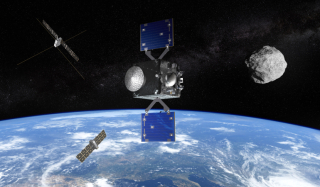
SPACEBEL and OHB Italia sign an agreement for the onboard software of ESA’s RAMSES mission
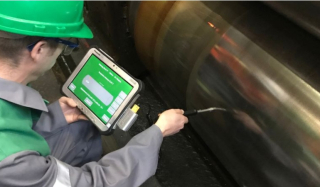
Nordics in Wallonia: Industry 5.0 in motion
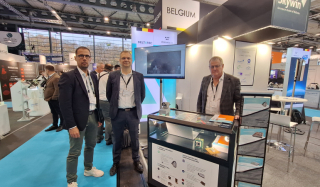
New Space: How a small Walloon company quietly became a global force in high-performance space imaging
